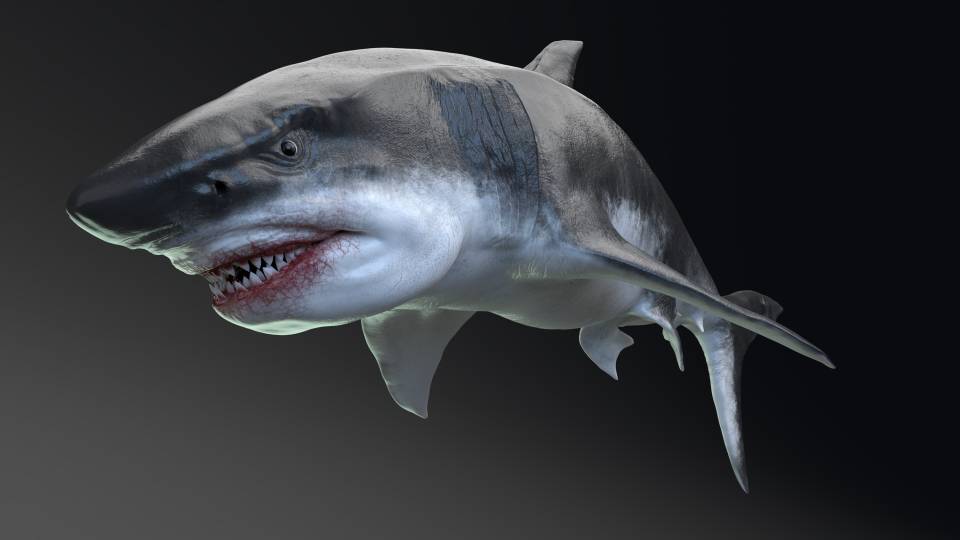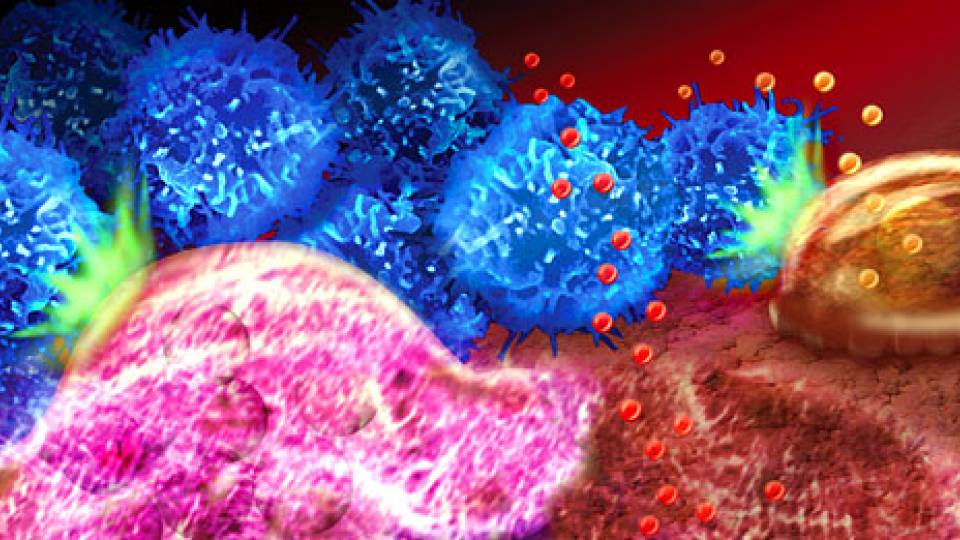Princeton geoscientists Xinning Zhang(Link is external) and Ashley Maloney(Link is external) have discovered that a geology technique shows promise in detecting cancer-like cells. If their preliminary results bear out, they may have identified a new signature for cancer, which could mean earlier diagnosis and better outcomes. Their work(Link is external) appeared in the Proceedings of the National Academy of Sciences.

From left: Xinning Zhang, Assistant Professor of Geosciences and the High Meadows Environmental Institute, and Ashley Maloney, a former Princeton Geosciences Harry Hess Postdoctoral Fellow and Simons Foundation Postdoctoral Research Fellow at Princeton who is now the Facility Manager for the Earth Systems Stable Isotope Lab at the University of Colorado-Boulder
The work focuses on two variants of hydrogen, which biogeochemists like Zhang and Maloney have long used to interpret past climates, but which turn out to also leave an isotopic footprint in cancer cells. “This naturally occurring signal can help us understand health and disease,” said Zhang, an assistant professor of geosciences and the High Meadows Environmental Institute.
The work is preliminary but promising, said Sebastian Kopf, a co-author of the study and an assistant professor in geological sciences at the University of Colorado-Boulder, in a statement(Link is external): “Your chances of survival are so much higher if you catch cancer early on. If this isotopic signal is strong enough that you could detect it through something like a blood test, that could give you an important hint that something is off.”
The key is comparing the two naturally occurring flavors (isotopes) of hydrogen: regular hydrogen (H) and oversized hydrogen (deuterium, or D), as they are fingerprinted by lipids (fatty acids). Zhang emphasized that this D to H ratio provides a naturally occurring signal, so it could potentially be measured with a simple blood test — specifically, a lipid test. “It doesn’t need radioactive tracers or any other invasive procedures,” she said.
As a graduate student, Zhang had realized that the same isotope ratio that geoscientists use to investigate ancient life forms, biogeochemical cycles and even petroleum systems could also reveal metabolic processes in bacteria — that is, how an organism takes in and uses water, air and food to grow.
She published(Link is external) a paper about that in 2009, then moved on to other research questions. “But at the back of my mind, I kept wondering, What are the applications of this idea? What can I do with it? And on a personal level, at that same time, my father was battling terminal cancer.”
At a seminar, she met early-career geochemist Ashley Maloney who, inspired by her own father’s work in medicine, was also curious about new biomedical applications. In 2018, Maloney joined Zhang’s lab as a Hess Fellow in the Geosciences Department, eager to pursue the implications of Zhang’s 2009 paper.
“I’m thankful that this work could be done at Princeton, where there are postdoctoral fellowships available to support interdisciplinary projects,” said Zhang. Most funding organizations won’t dedicate resources to blue-sky research that doesn’t have at least a proof-of-concept experiment to support it, she said.
Finding hydrogen’s footprints in cancer
Hydrogen leaves a small but potent signature in cancer cells, said Zhang and Maloney.
“Many problematic processes in cells have to do with improper hydrogen flow,” Zhang said. “The metabolic pathways go wrong. For example, cancer cells divide really quickly, and they change their metabolism to try to support that fast growth. To do that, they turn on different pathways that have different ways of moving hydrogen around.”
And that shift in hydrogen leaves a footprint behind in lipids (fatty acids), which are among the most hydrogen-rich molecules in cells.
Fatty acids are both very stable and very good at holding onto the past. Their stability is the reason butter can sit safely on the kitchen counter long after meat or bread would spoil.
“Of all the organic molecules that make up your cells, the lipids last the longest in nature,” Zhang said. “That’s helpful for geoscientists, studying the geologic record, but it also has implications for human health. Because not only do lipids last a long time, but the hydrogen in them also interacts with lots of different processes in cells, leading to isotopic imprints of these processes in lipid hydrogen.”
So as a first step, Zhang and Maloney decided to look at lipids in yeast, a simple but powerful model for cancer.
“We’re geoscientists, so we knew we couldn’t work with human cancer cells right away,” said Maloney, now a research associate at the University of Colorado-Boulder Earth Systems Stable Isotope Lab. “So during the pandemic, I learned how to grow yeast — Saccharomyces cerevisiae, the same yeast found in bakeries and breweries — under very controlled conditions.” Maloney worked out the kinks in the system through collaboration with yeast labs at Princeton and at CU-Boulder.
Cancer cells sustain their hyper-fast growth gorging on sugars and then fermenting, so Maloney fed glucose to some yeast to encourage fermentation. She fed the control group glycerol, which the yeast used for slow growth by respiration, the process that healthy cells use for energy and growth.
And when Maloney and Zhang measured the hydrogen isotopes in the lipids using isotope ratio-mass spectrometry, a fundamental tool in geosciences, they found that the fermenting, cancer-like yeast produced lipids with much less heavy hydrogen (D) than the control group.
“We were really impressed to find such a big difference in the hydrogen signature between the cancer-like yeast and the healthy yeast cells,” said Maloney. “It was an even bigger signal than we had anticipated.”
To start extending their results to humans, the geoscientists obtained some cancerous and healthy mouse liver cells from then-graduate student Zhaoyue Zhang(Link is external) (a 2021 Ph.D. alumna) in the Rabinowitz lab, now a postdoc at the Rockefeller Institute. Like in yeast, the D to H ratio in fermenting cancer cells was lower than in healthy, respiring cells.
Now that they have proof of concept, Zhang and her colleagues are excited to expand their research.
“We needed to get this work done to show that yes, there is a signal — a big signal,” she said. “It’s exciting to see that predictions based on bacteria play out in yeast and more complex life forms. Now, we have key data we need to try to connect with and researchers in the medical field, to try to develop this tool beyond geosciences to help people.”
—
“Large enrichments in fatty acid 2H/1H ratios distinguish respiration from aerobic fermentation in yeast(Link is external) Saccharomyces cerevisiae(Link is external),” by Ashley E. Maloney, Sebastian H. Kopf, Zhaoyue Zhang, Jamie McFarlin, Daniel B. Nelson, Andrew L. Masterson and Xinning Zhang, was published May 6, 2024, in the Proceedings of the National Academy of Sciences (DOI: 10.1073/pnas.2310771121(Link is external)). This research was supported by the Simons Foundation (732763 to A.E.M.), the Princeton University Department of Geosciences Harry Hess Postdoctoral Fellowship (A.E.M.), the High Meadows Environmental Institute Carbon Mitigation Initiative (X.Z.) and the Princeton University Geosciences Phillips Fund.







